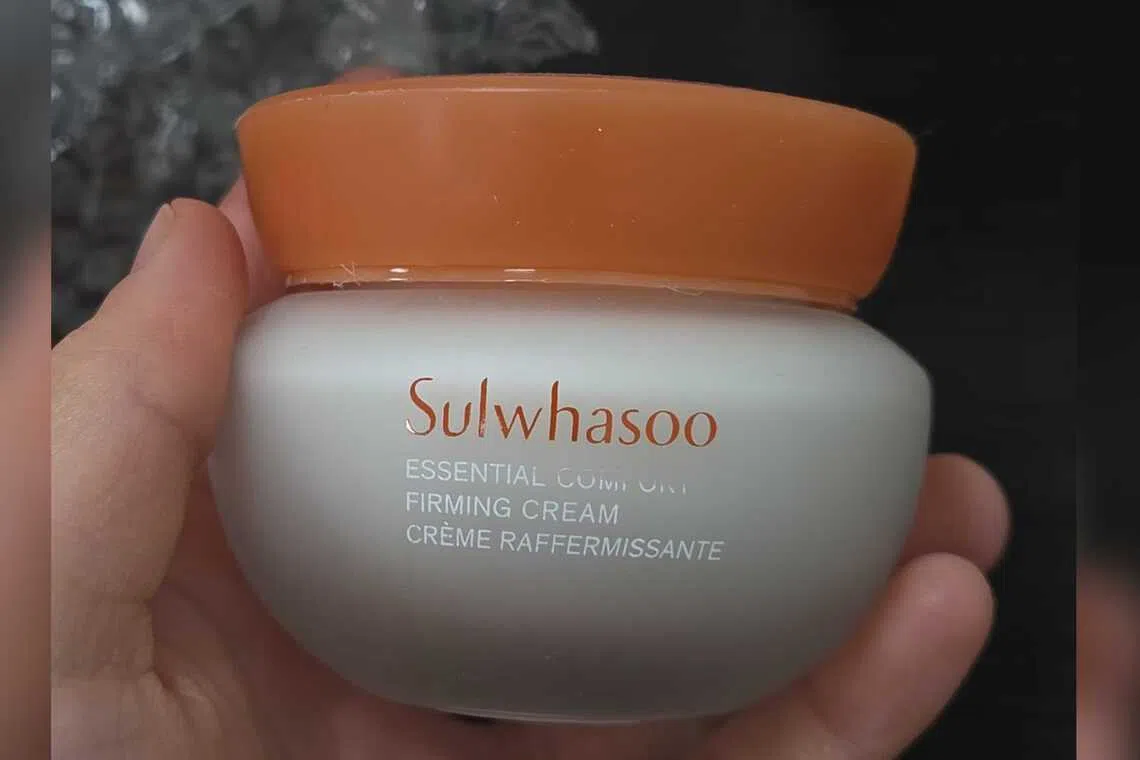Counterfeit K-beauty products flooding global market, and most shoppers can’t tell the difference
Sign up now: Get insights on Asia's fast-moving developments

A fake Sulwhasoo cream that was illegally imported from China and listed on Korean e‑commerce sites as authentic.
PHOTO: INCHEON REGIONAL CUSTOMS
Follow topic:
SEOUL - A wave of counterfeit South Korean beauty products is sweeping across global markets, with knock-offs so convincing that many consumers do not know they have been duped until it is too late.
In 2025 alone, losses tied to intellectual property theft targeting South Korean beauty brands have skyrocketed to 22 billion won (S$19.7 million), according to data from the Korea Customs Service released by lawmaker Cha Gyu-geun’s office.
That marks a staggering 24-fold increase from 2024.
The vast majority of counterfeits were traced back to China, which accounted for 99 per cent of all detected shipments.
The authorities say many of the fake products entered Korea by way of the US. Of all counterfeits seized between January and September, 81 per cent (worth 17.8 billion won) followed this roundabout route.
For consumers, the danger is not just economic. Imitations often look nearly identical to authentic items, but what’s inside them is anybody’s guess.
A fake version of APR’s popular collagen mask, for instance, changed just one letter in the product name – “collagen” became “gollagen” – while copying the packaging down to the minutest of details.
APR, a leading Korean beauty-tech firm, warned in a statement that counterfeit items “cannot be verified for their ingredients”, posing potential health risks.
Counterfeiters are no longer limiting their targets to high-end labels.
Amorepacific’s luxury brand Sulwhasoo topped the 2024 list of most-faked Korean cosmetics, but 2025 has seen budget-friendly brands such as Manyo take the lead. According to customs data submitted to Mr Cha’s office, Manyo counterfeits were the most frequently seized in 2025 (952 units), followed by Sulwhasoo (812).
In late September, Chinese police in Foshan raided a warehouse producing fakes of five trending Korean skincare brands, including Beauty of Joseon and Skin1004.
The authorities confiscated 56,000 counterfeit items, valued at one billion won by genuine retail prices. The bust was the largest of its kind involving Korean brands in China, according to the Korea Intellectual Property Protection Agency.
Industry experts say emerging brands, which often lack the resources to monitor international markets, are particularly vulnerable.
In many cases, companies discover the problem only after customers report suspicious products abroad.
Korea’s Incheon Customs recently arrested an online seller in September who illegally imported more than 7,000 Chinese-made knock-offs disguised as Korean brands and sold them domestically for less than half the normal price.
Consumer complaints citing skin irritation and suspicious packaging helped trigger the investigation.
In response, companies like Amorepacific say they are expanding cooperation with customs authorities overseas and pursuing legal action.
South Korea’s government also plans to establish a new public-private task force in 2026 focused on protecting K-beauty trademarks and improving counterfeit detection at borders. THE KOREA HERALD/ASIA NEWS NETWORK

